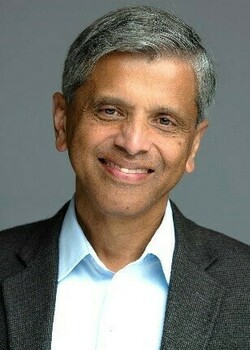ND Energy Faculty Luncheon: "Semiconductor Architectures: Nano-Scale Solutions for Macro-Scale Carbon Challenges" by Prashant V. Kamat

All interested Notre Dame faculty are invited to attend the ND Energy Faculty Luncheon presentation by Prashant V. Kamat, Rev. John A. Zahm, C.S.C. Professor of Science in the Department of Chemistry and Biochemistry and Radiation Laboratory, titled "Semiconductor Architectures: Nano-Scale Solutions for Macro-Scale Carbon Challenges". His talk will be followed by a discussion focused on (1) cross-disciplinary basic research needs, (2) potential avenues for external and internal collaborations, (3) funding sources to target, and (4) any follow-up action items.
We hope you will be able to join us and participate in this discussion on potential new directions for cross-collaborations. To help us plan for a sufficient number of lunches, please respond to the Google Calendar invitation by 5:00 p.m. on Friday August 23. If you did not receive a calendar invite, please contact Andrea Connors, Administrative Coordinator for ND Energy.
Abstract
To limit global warming to well below 2°C within this century, we must reach net-zero carbon emissions by 2050. Merely curbing fossil fuel consumption will not suffice, given the anticipated surge in global energy demand. While nuclear and renewable energy sources like photovoltaics are considered green solutions, they often have a substantial carbon footprint. Their energy payback times, which measure how long it takes to recover the energy used in production, can extend between 3 to 10 years.
Semiconductor nanostructures are revolutionizing the design of light energy conversion devices, such as thin-film solar cells and light-emitting devices. Due to low-temperature processing techniques, these thin-film designs have reduced energy payback times. Consuming less energy during production and using fewer materials drastically cuts down their carbon footprint, sometimes bringing energy payback time to under a year. Earlier research efforts were centered on synthesizing diverse semiconductor nanostructures and analyzing their size-dependent optical and electronic traits. However, careful engineering in recent times has led to their successful integration into high-efficiency thin-film solar cells. Notably, metal halide perovskite solar cells can now achieve power conversion efficiencies exceeding 26%, rivaling traditional silicon solar cells.
Looking ahead, energy storage solutions like batteries and solar fuels, such as hydrogen, are needed to fully realize the potential of renewable energy. This presentation will highlight some of the latest developments and explore the promising future of semiconductor architectures in light energy conversion and storage.
Biography
Prashant V. Kamat is a Rev. John A. Zahm, C.S.C., Professor of Science in the Department of Chemistry and Biochemistry and Radiation Laboratory at the University of Notre Dame. He is also a Concurrent Professor in the Department of Chemical and Biomolecular Engineering. Prof. Kamat has for more than three decades worked to build bridges between physical chemistry and material science to develop advanced nanomaterials that promise cleaner and more efficient light energy conversion. He has published more than 500 scientific papers that have been well recognized by the scientific community Thomson-Reuters has featured him as one of the most cited researchers each year since 2014 (2014 -2022). He is currently serving as the Editor-in-Chief of ACS Energy Letters.